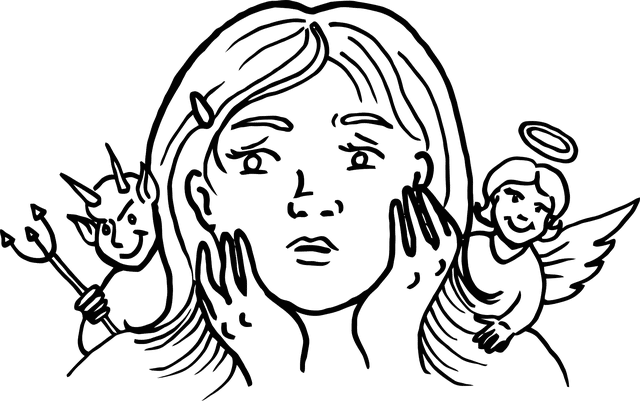
The ambivalent has a positive and a negative valence.
Ambivalent is a concept associated with ambivalence (the particularity of that which can be interpreted in mutually contradictory ways). For psychology , ambivalence is a state of mind in which opposite emotions coexist.
The ambivalent exists from the notion of valence , which can be understood as interest in or rejection of a certain thing. What produces joy or pleasure has a positive valence, while what generates sadness or pain has a negative valence.
The ambivalent, with two valences
Ambivalence implies that feelings with positive valence and negative valence coexist with respect to the same element. The typical example of ambivalence is love-hate : “I feel something ambivalent about María: I am fascinated with her and I think I love her but, at the same time, I hate how she treats me when she is with her friends,” “The situation makes me feel uncomfortable .” ambivalence, since it causes me satisfaction and, at the same time, it causes me pain.”
There are those who recognize different levels of ambivalence: it can be temporary or specific (when someone is debating between eating a bowl of noodles or maintaining a diet, for example), affective (mixed feelings about a person) or intellectual (who simultaneously speaks to favor of a proposition and its opposite).

Ambivalent behavior is associated with a mental disorder.
a type of behavior
Ambivalent behavior can be linked to a mental disorder such as schizophrenia , psychosis or obsessional neurosis , although it is also associated with certain states accepted as normal, such as jealousy.
In some contexts, a person is considered ambivalent when they communicate through ambiguous signals , which makes social bonding difficult: “I don't understand Ariel: on the one hand he tells me that he misses me and on the other he doesn't call me at all. week. “He is an ambivalent boy.”
Anxious-ambivalent insecure attachment
The relationship that children establish with their parents or those closest adult references are of vital importance for the development of their emotional universe.
If this relationship is based on secure attachment , where the child feels contained and understood, it is likely that in the future he or she will develop enviable emotional stability; If, on the other hand, the relationship is one of insecure attachment , the child will feel completely adrift and in the future it will be extremely difficult for him to establish a coherent life line, because of that frustrated relationship.
Insecure attachment occurs when the responses that parents present to the physical or emotional needs of their children have a certain ambivalence or contradiction; That is, sometimes they respond positively, others negatively, and on certain occasions they do not respond at all. This creates great confusion for the child because he does not know when and how his parents will respond to his needs.
The consequence of all this is a deep feeling of abandonment and loneliness , which in turn makes him powerless in the face of his own existence, losing control; All of this leads to great anxiety and manifests itself in a strong distrust of oneself.
A disorder with various consequences
These children grow up with a feeling of never being good enough for others to love them and are always aware of the emotional signs in their environment; Furthermore, this experience causes low self-esteem , which makes them place themselves many steps below their environment.
The first difficulties of this disorder occur when the child enters an environment outside the family , generally school. In this environment, children manifest clear problems on a cognitive and emotional level; In this last aspect, they will feel the constant need to receive approval for everything they do, they will manifest possessive attitudes, jealousy and rivalry.
The clearest way to define the fundamental characteristic of this type of attachment is as an intense anxiety to feel loved and the feeling, at the same time, of not being able to be so, which leads them to develop a disturbing concern about the attention or interest they present. the others in front of their person or actions.
